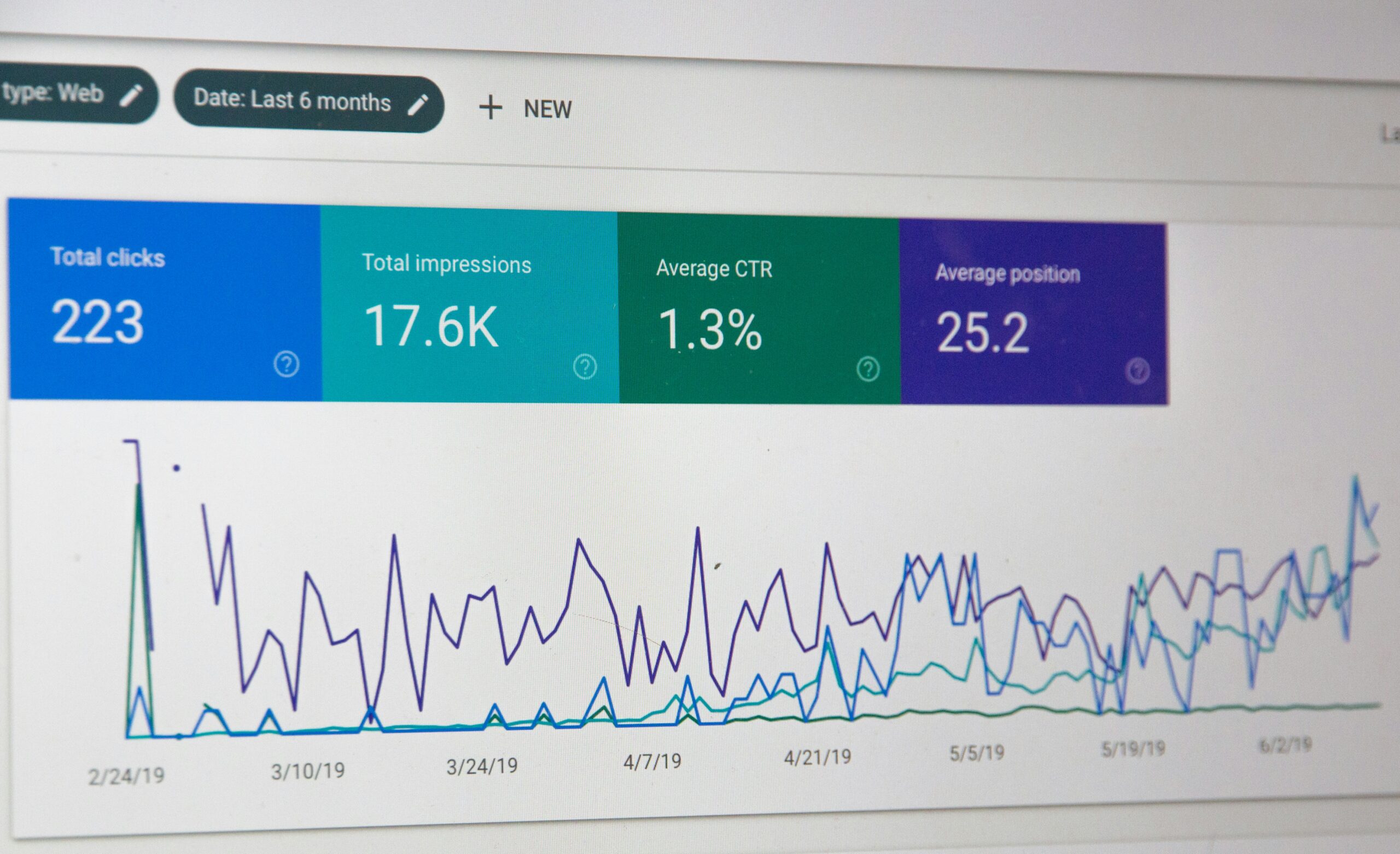Digital marketing is constantly evolving, with new trends, tools, and techniques emerging each year. As we enter 2020, it’s crucial for businesses to stay ahead of the curve and leverage the latest digital marketing strategies to reach and engage their target audience effectively. In this blog post, we’ll explore key digital marketing strategies for 2020 and how businesses can utilize them to drive growth and success.
Table of Contents

1. Embrace Video Marketing
- Video Content Dominance: Video content has become the preferred format for consuming information online. Platforms like YouTube, Instagram, and TikTok have seen tremendous growth in user engagement and viewership, making them ideal channels for businesses to reach their target audience. By leveraging the power of video, businesses can tap into this trend and capture the attention of their audience more effectively than traditional text or image-based content.
- Prioritizing Video Marketing: In 2020, businesses should make video marketing a top priority in their digital strategy. This means allocating resources and budget towards creating high-quality video content that resonates with their target audience. Video marketing allows businesses to convey their brand message in a more engaging and memorable way, helping to build brand awareness and loyalty.
- Types of Video Content: There are various types of video content that businesses can create to achieve different objectives. For example:
- Product Showcases: Videos showcasing products or services in action help potential customers visualize how they can benefit from them.
- Customer Testimonials: Testimonial videos featuring satisfied customers sharing their experiences can build trust and credibility.
- Educational Content: Videos providing valuable insights, tips, or tutorials related to the industry or niche establish the business as an authority and resource for its audience.
- Live Streaming and Stories: Live streaming and Stories features on social media platforms offer unique opportunities for businesses to engage with their audience in real-time. Through live streaming, businesses can host Q&A sessions, product launches, behind-the-scenes glimpses, or special events, fostering a sense of connection and authenticity. Similarly, Stories provide a more ephemeral and casual way to share updates, announcements, and behind-the-scenes content, encouraging regular interaction and engagement from followers.
Learn more about the power of video marketing with insights from HubSpot to help for Mastering Digital Marketing in 2020.
2. Focus on Personalization.
- Personalized Marketing as a Cornerstone: Personalized marketing involves tailoring marketing efforts to individual customers based on their unique characteristics, preferences, and behaviors. It recognizes that one-size-fits-all marketing approaches are no longer effective in today’s digital landscape where consumers expect personalized experiences. Personalization allows businesses to build stronger connections with their audience, increase engagement, and drive conversions.
- Utilizing Data Analytics and Marketing Automation: Data analytics and marketing automation tools play a crucial role in enabling personalized marketing. Businesses can use data analytics to gather insights about their customers’ demographics, behaviors, and preferences. Marketing automation tools allow businesses to automate processes such as email marketing, social media posting, and campaign management, making it easier to deliver personalized content and experiences at scale.
- Segmenting Your Audience: Segmentation involves dividing your audience into smaller, more manageable groups based on shared characteristics or behaviors. In 2020, businesses should leverage data analytics to segment their audience effectively. This segmentation can be based on factors such as demographics (age, gender, location), behaviors (purchase history, website interactions), and preferences (product interests, content engagement).
- Delivering Personalized Content and Offers: Once your audience is segmented, you can deliver personalized content, offers, and recommendations to each segment. This could include targeted email campaigns, personalized product recommendations on your website, or customized social media ads. By tailoring your messaging and offers to the specific interests and needs of each segment, you can increase relevance and engagement.
- Investing in AI and Machine Learning: Artificial intelligence (AI) and machine learning technologies can further enhance personalization efforts by analyzing large amounts of data to identify patterns and predict customer behavior. AI-powered recommendation engines can suggest relevant products or content to individual customers based on their past interactions. Machine learning algorithms can also optimize marketing campaigns in real-time, allowing businesses to deliver hyper-targeted messages and achieve better results.
Discover how personalization impacts consumer behavior with insights from Accenture and its important in Mastering Digital Marketing in 2020.
3. Optimize for Voice Search is important in Mastering Digital Marketing in 2020.

- Rising Popularity of Voice-Activated Devices: Voice-activated devices such as Amazon Echo (powered by Alexa) and Google Home (powered by Google Assistant) have witnessed a significant surge in adoption in recent years. These devices allow users to perform various tasks and access information using voice commands, making them a convenient and hands-free way to interact with technology.
- Voice Search as a Significant Trend: Voice search refers to the use of voice commands to perform searches on the internet. With the increasing prevalence of voice-activated devices, voice search has emerged as a significant trend in digital marketing. Users are increasingly turning to voice search to find information, make inquiries, and perform tasks, reshaping the way businesses need to approach their digital marketing strategies.
- Optimizing Website and Content for Voice Search: To capitalize on the trend of voice search, businesses should optimize their website and content accordingly. This involves focusing on natural language keywords and phrases that mimic how people speak in everyday conversations. Unlike traditional text-based searches, voice searches tend to be more conversational and long-tail in nature.
- Creating FAQ Pages and Blog Posts: One effective strategy for optimizing for voice search is to create FAQ pages and blog posts that directly address common questions and queries users might ask through voice search. By anticipating the questions your target audience is likely to ask and providing comprehensive answers, you can increase the likelihood of your content being surfaced in voice search results.
- Incorporating Long-Tail Keywords and Conversational Language: Long-tail keywords are longer and more specific keyword phrases that typically have lower search volumes but higher conversion rates. By incorporating long-tail keywords and conversational language into your content, you can improve its visibility in voice search results and capture valuable traffic. Think about how your audience might phrase their queries when using voice search and tailor your content accordingly.
4. Leverage Social Commerce.
- Evolution of Social Media Platforms: Social media platforms have undergone significant evolution over the years. While they were originally used primarily for engagement and brand awareness, they have now transformed into powerful e-commerce platforms. This shift has been driven by changes in consumer behavior, technological advancements, and the increasing integration of shopping features into social media platforms.
- Leveraging Social Commerce Features: In 2020, businesses can capitalize on the rise of social commerce by leveraging features offered by platforms like Instagram, Facebook, and Pinterest. These platforms provide tools such as Instagram Shopping, Facebook Marketplace, and Pinterest Buyable Pins, which allow businesses to showcase and sell products directly to their audience without requiring them to leave the platform.
- Creating Shoppable Posts and Ads: One effective strategy for leveraging social commerce features is to create shoppable posts and ads. These posts and ads include clickable product tags or buttons that allow users to purchase products seamlessly while browsing their social media feeds. By providing a frictionless shopping experience, businesses can increase conversion rates and drive sales directly from social media.
- Utilizing Influencer Marketing: Influencer marketing involves partnering with individuals who have a large and engaged following on social media to promote products or services. In 2020, businesses can utilize influencer marketing to reach new audiences and drive sales through authentic endorsements and recommendations. Influencers can create sponsored posts or videos featuring products, which can help increase brand visibility, credibility, and trust among their followers.
5. Prioritize Customer Experience.
- Heightened Competition and Consumer Expectations: In today’s competitive marketplace, consumers have more options than ever before. They also have higher expectations when it comes to the products they purchase and the services they receive. Businesses must differentiate themselves by delivering exceptional customer experiences that go above and beyond what is expected. This involves providing personalized interactions, anticipating customer needs, and delivering value at every touchpoint.
- Prioritizing Customer Experience: In 2020, businesses should make customer experience a top priority across all touchpoints of the customer journey. This includes interactions on the website, social media channels, email communications, and customer service interactions. By prioritizing customer experience, businesses can build stronger relationships with their customers, increase loyalty, and differentiate themselves from competitors.
- Investing in User Experience (UX) Design: User experience (UX) design plays a crucial role in shaping the customer experience. Businesses should invest in UX design to create intuitive and user-friendly interfaces that enhance engagement and drive conversions. This involves designing websites, mobile apps, and other digital touchpoints with the user in mind, focusing on factors such as ease of use, navigation, and visual appeal.
- Implementing Chatbots and AI-powered Customer Service Tools: Chatbots and AI-powered customer service tools can help businesses provide instant support and assistance to their customers. These tools can handle common inquiries, provide information, and even complete transactions without the need for human intervention. By implementing chatbots and AI-powered tools, businesses can improve customer satisfaction, reduce response times, and free up human agents to focus on more complex issues.
6. Invest in SEO and Content Marketing.

- Search Engine Optimization (SEO) and Content Marketing as Foundations: SEO and content marketing are two interconnected pillars of a successful digital marketing strategy. SEO involves optimizing your online content to improve its visibility in search engine results, while content marketing focuses on creating and distributing valuable and relevant content to attract and engage a target audience.
- Creating High-Quality, Valuable Content: In 2020, businesses should focus on producing high-quality, valuable content that resonates with their target audience. This content can take various forms, including blog posts, articles, videos, infographics, and more. By addressing the needs, concerns, and interests of your audience, you can establish authority in your industry, build trust, and encourage audience engagement.
- Optimizing Content for Keywords: To enhance visibility in search engine results pages (SERPs), it’s crucial to optimize your content for relevant keywords and phrases. Keyword optimization involves strategically incorporating terms that users are likely to search for. This helps search engines understand the relevance of your content to user queries, improving the likelihood of your pages ranking higher in search results.
- Improving Visibility and Driving Organic Traffic: Effective SEO and content marketing strategies work together to drive organic traffic to your website. As your content ranks higher in search results, it becomes more visible to users searching for related topics. By attracting organic traffic, businesses can reach audiences genuinely interested in their products or services, increasing the likelihood of conversion.
- Staying Abreast of Google’s Algorithm Updates and Best Practices: Search engines, particularly Google, regularly update their algorithms to deliver more relevant and accurate search results. It’s essential for businesses to stay informed about these updates and adhere to best practices in SEO. This involves understanding ranking factors, optimizing for mobile-friendliness, and ensuring website security. Staying compliant with search engine guidelines helps maintain the effectiveness of SEO efforts and ensures a positive user experience.
8. Stay Agile and Data-Driven.
Digital marketing is inherently dynamic, with trends and consumer behaviors evolving rapidly. To stay ahead of the curve, businesses must adopt an agile and data-driven approach to their digital marketing efforts. Continuously monitor key performance indicators (KPIs), analyze data insights, and adapt your strategies based on emerging trends and consumer preferences. Experiment with different tactics and channels to optimize your digital marketing efforts and maximize ROI.
finally, In the journey of developing your startup idea, understanding the evolving landscape of digital marketing in 2024 is paramount. By aligning your startup’s marketing strategies with the latest trends and insights outlined in the digital marketing landscape, you can effectively position your idea in the market and attract potential customers. Leveraging innovative techniques such as video marketing, personalization, and social commerce enhances your startup’s visibility, engagement, and conversion rates, laying a solid foundation for growth and success.
Moreover, as your startup idea takes shape, implementing effective strategies to grow your business becomes imperative. By integrating growth-focused initiatives outlined in comprehensive guides, such as setting realistic targets, leveraging data analytics, and prioritizing customer experience, you can propel your startup towards sustainable growth and profitability. These strategies empower you to optimize operations, expand market reach, and capitalize on emerging opportunities, driving long-term success and competitiveness in the dynamic business landscape.
Furthermore, mastering digital marketing techniques serves as a catalyst for scaling your business and maximizing its potential impact. By harnessing digital marketing strategies tailored to your startup’s unique value proposition and target audience, you can amplify brand awareness, generate leads, and foster customer loyalty. Whether through strategic content marketing, SEO optimization, or innovative social media campaigns, effective digital marketing initiatives drive customer acquisition, retention, and revenue growth, fueling the expansion and evolution of your startup venture.
(FAQs)
What are some key trends in digital marketing for 2020?
In 2020, digital marketing trends like video marketing, personalization, voice search optimization, social commerce, customer experience focus, and SEO/content marketing investment shaped businesses’ online engagement strategies.
How can businesses leverage video marketing effectively in their digital strategy?
To maximize video marketing, focus on creating valuable content, such as product demos and testimonials, while utilizing live streaming and Stories on social media for real-time engagement
What role does personalization play in digital marketing, and how can businesses implement it effectively?
Effective personalization in digital marketing entails tailoring efforts to individual customers through data analytics, segmentation, and AI-driven optimization for real-time campaign refinement.
“Contact us today to start boosting your digital presence!”



